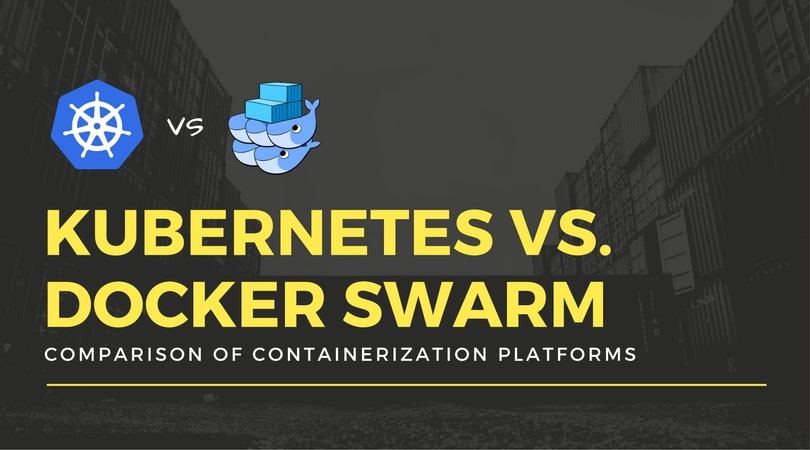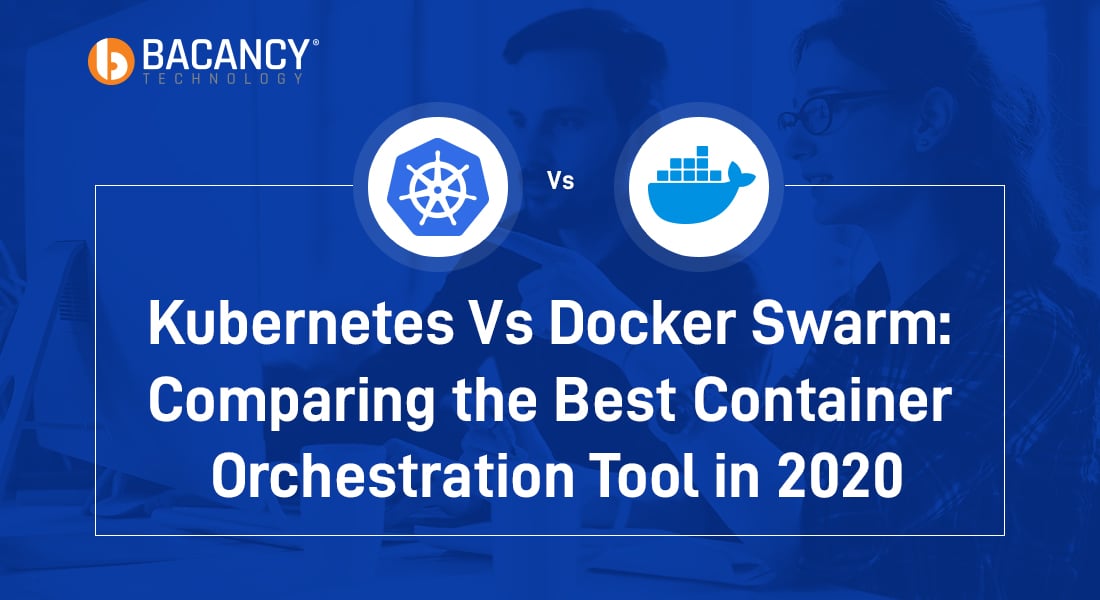Unraveling Container Orchestration: A Key to Efficient Application Deployment
Container orchestration plays a pivotal role in modern application deployment, enabling efficient management of containers in large-scale environments. It simplifies the process of deploying, scaling, networking, and managing containers, ensuring high availability and resilience. Given the complexity of containerized applications, performance becomes a critical factor in selecting the right orchestration tool. This article focuses on Docker Swarm and Kubernetes, two popular container orchestration platforms, and compares their performance aspects to help you make an informed decision.
Docker Swarm: A Dive into Its Workings and Performance Metrics
Docker Swarm is a native Docker orchestration tool designed for simple and scalable deployment, networking, and management of Docker containers. It leverages Docker’s API and networking capabilities to provide seamless integration with Docker applications. Swarm’s performance aspects include efficient resource utilization, speed, and built-in service discovery and load balancing.
Service discovery in Docker Swarm involves automatically registering and discovering nodes and services within the cluster. This feature allows for automatic scaling and load distribution, ensuring high availability and performance. Swarm’s built-in load balancer, integrated with the Docker Engine, intelligently distributes network traffic across nodes and services based on their availability and resource capacity.
Docker Swarm’s performance metrics include resource utilization, measured by the ability to allocate and manage resources efficiently. Swarm’s scheduling algorithms optimize resource allocation based on the available resources and the demands of running services. Additionally, Swarm offers speed and agility in deploying and scaling applications, minimizing the time and effort required to manage large-scale containerized environments.
Kubernetes: Exploring Its Architecture and Performance Capabilities
Kubernetes, an open-source container orchestration platform, is designed to automate application deployment, scaling, and management. Its architecture consists of various components, including pods, services, and deployments, that work together to ensure high availability, performance, and fault tolerance.
Pods are the smallest deployable units in Kubernetes, representing one or more containers working together. Services, another key component, provide a stable IP address and DNS name for a set of pods, allowing for load balancing and communication between services. Deployments, on the other hand, manage the rollout and scaling of replicated pods, ensuring high availability and performance.
Kubernetes’ performance aspects include fault tolerance, scalability, and resource management. Fault tolerance is achieved through self-healing mechanisms that automatically replace and restart failed containers or nodes. Scalability is ensured through the ability to add or remove nodes and pods dynamically, based on the workload requirements. Resource management is handled through resource quotas, limits, and priorities, ensuring efficient resource utilization and allocation.
Performance Benchmarking: Docker Swarm vs Kubernetes
Benchmarking is an essential step in comparing the performance of Docker Swarm and Kubernetes. Various tools and techniques are available to help you evaluate and analyze the performance of these container orchestration platforms. Selecting appropriate workloads and configurations is crucial to obtaining accurate and meaningful results.
Some popular benchmarking tools for container orchestration performance include Sysbench, TPC-C, and Geekbench. These tools can measure various aspects of performance, such as CPU, memory, network, and disk I/O. It is essential to select workloads and configurations that closely resemble your production environment to ensure the results are relevant and applicable.
When benchmarking Docker Swarm and Kubernetes, consider the following factors:
- Select a diverse set of workloads, including both CPU-intensive and I/O-intensive tasks.
- Ensure that the configurations of both platforms are optimized for performance.
- Monitor resource utilization, response times, and throughput during the benchmarking process.
- Document and analyze the results, focusing on the differences in performance and identifying potential bottlenecks.
How to Optimize Docker Swarm and Kubernetes Performance
Optimizing the performance of Docker Swarm and Kubernetes involves several best practices and tips. By focusing on resource allocation, network configuration, and monitoring, you can ensure that your container orchestration platform operates at its peak potential.
Resource Allocation
Proper resource allocation is crucial for maintaining high performance in container orchestration environments. Both Docker Swarm and Kubernetes allow you to set resource limits and reservations for individual containers and services. By monitoring resource utilization and adjusting these settings accordingly, you can prevent performance bottlenecks and ensure that resources are used efficiently.
Network Configuration
Optimizing network configuration is another critical aspect of improving container orchestration performance. Techniques such as using overlay networks, enabling network plugins, and configuring load balancers can significantly impact the speed and reliability of your applications. It is essential to understand the network requirements of your applications and optimize the network configuration accordingly.
Monitoring
Monitoring the performance of your container orchestration platform is vital for identifying and resolving performance issues. Tools such as Prometheus, Grafana, and cAdvisor can help you monitor resource utilization, network performance, and application metrics. By setting up alerts and notifications, you can proactively address performance issues before they impact your users.
Real-World Use Cases: Comparing Docker Swarm and Kubernetes Performance
Understanding the performance differences between Docker Swarm and Kubernetes in real-world scenarios can help organizations make informed decisions. Here, we present two use cases where companies have chosen either Docker Swarm or Kubernetes and the impact on performance.
Case Study 1: Docker Swarm at a Mid-Sized Software Company
A mid-sized software company decided to use Docker Swarm for their container orchestration needs. Their primary reason for choosing Docker Swarm was its simplicity and ease of use. The company’s application landscape consisted of several microservices, and they required a solution that could handle service discovery, load balancing, and scaling efficiently.
By using Docker Swarm, the company was able to achieve a high level of performance, with minimal resource utilization. They reported that the platform’s built-in service discovery and load balancing features significantly reduced the time and effort required to manage their containerized applications. Additionally, the company was able to scale their applications seamlessly during peak usage periods, ensuring consistent performance for their users.
Case Study 2: Kubernetes at a Large E-commerce Platform
A large e-commerce platform chose Kubernetes for their container orchestration needs due to its robust architecture and advanced features. The platform’s primary requirements included fault tolerance, scalability, and resource management. Kubernetes’ ability to handle complex deployments and its extensive ecosystem of plugins and tools made it an ideal choice for the company.
By using Kubernetes, the e-commerce platform was able to achieve high levels of fault tolerance and scalability. The company reported that Kubernetes’ self-healing capabilities and automatic scaling features significantly improved their platform’s reliability and performance. Additionally, Kubernetes’ resource management features allowed the company to optimize resource utilization, reducing costs and improving overall efficiency.
Making an Informed Decision: Balancing Features and Performance
Deciding between Docker Swarm and Kubernetes depends on various factors, including your specific use case, performance requirements, and desired features. By understanding the key differences and performance aspects of both platforms, you can make an informed decision that best suits your needs.
Docker Swarm: A Great Choice for Simplicity and Ease of Use
Docker Swarm is an excellent choice for organizations looking for a simple and easy-to-use container orchestration platform. Its built-in service discovery, load balancing, and scaling features make it an ideal solution for managing containerized applications efficiently. Additionally, Docker Swarm’s lower resource utilization and faster setup time can contribute to better performance in certain scenarios.
Kubernetes: A Robust Solution for Complex Deployments
Kubernetes is a powerful container orchestration platform designed for complex deployments. Its robust architecture, fault tolerance, scalability, and resource management features make it an ideal choice for organizations requiring high levels of reliability and performance. However, Kubernetes’ steep learning curve and resource-intensive nature may not be suitable for all use cases.
Consider Your Specific Use Case and Requirements
When deciding between Docker Swarm and Kubernetes, consider your specific use case and requirements. Factors such as the complexity of your application landscape, performance requirements, resource availability, and in-house expertise should all play a role in your decision-making process. By carefully evaluating these factors, you can choose the container orchestration platform that best meets your needs and delivers optimal performance.
Future Trends: The Evolution of Container Orchestration Performance
Container orchestration is an ever-evolving field, and staying informed about new trends and advancements is crucial for optimizing performance and staying ahead of the competition. Here, we discuss emerging trends and performance optimization techniques in container orchestration.
Growing Adoption of Serverless Architectures
Serverless architectures are becoming increasingly popular in container orchestration, allowing organizations to build and deploy applications without worrying about infrastructure management. By integrating serverless architectures with container orchestration platforms like Docker Swarm and Kubernetes, you can further optimize performance, reduce costs, and improve scalability.
Adoption of DevOps Practices
DevOps practices, such as continuous integration and continuous delivery (CI/CD), are becoming essential for organizations looking to improve their container orchestration performance. By automating the build, test, and deployment processes, you can ensure that your applications are always running at their best and that any performance issues are identified and addressed promptly.
Performance Monitoring and Optimization Tools
Performance monitoring and optimization tools, such as Prometheus, Grafana, and cAdvisor, are becoming increasingly important for organizations looking to optimize their container orchestration performance. These tools allow you to monitor resource utilization, network performance, and application metrics, enabling you to identify and address performance issues proactively.
Emphasis on Security and Compliance
Security and compliance are becoming increasingly important in container orchestration, with organizations looking for ways to secure their applications and data while still maintaining high levels of performance. By implementing security best practices, such as network segmentation, role-based access control, and encryption, you can ensure that your container orchestration platform is both secure and performant.
Stay Informed and Adapt
Staying informed about new trends and advancements in container orchestration is crucial for optimizing performance and staying ahead of the competition. By adapting to change and incorporating new tools and techniques, you can ensure that your container orchestration platform is always running at its best and that your applications are delivering optimal performance for your users.






